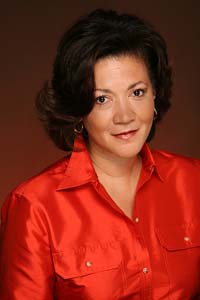A divided Minneapolis neighborhood comes together
- Article by: LYNDA MCDONNELL
- Updated: September 28, 2011 – 8:05 PM
Several years ago, when I asked my father about racial attitudes when he was a boy in Kansas City in the 1920s, he named the street that divided the black neighborhood from the white.
Then he recalled standing on the white side of the street, listening to great boogie-woogie piano being played on the porch of a house on the other side.
A dime, he knew, was the price of admission. For 10 cents, he could have crossed the street, entered the yard, stepped onto the porch and joined the crowd of African-Americans moving to the joyous music.
Why didn’t he cross? This good and generous man who loved music and never uttered a bigoted word said simply: “People stayed with their own kind.”
A year ago in my south Minneapolis neighborhood, long divided by race and the canyon of Interstate 35W, two groups of neighbors nearly came to blows over a proposal to build a dog park in Martin Luther King Park.
Black elders from east of the freeway linked arms and sang: “We shall overcome.” Black activist Spike Moss fired off the “racist” missile.
Dog owners, mostly white residents from west of the freeway, were baffled, hurt and angry. The Park Board quickly retreated to seek less dangerous ground for Fido to play.
After such race-based conflicts, the usual pattern is for the two sides to draw back to our camps. We mutter complaints and await some new offense to fuel old hurts anew.
Happily, last year’s skirmish had a different outcome. Minneapolis City Council Member Elizabeth Glidden, whose district straddles I-35W, called together a small group of neighbors from both sides of the freeway and encouraged us to envision a different relationship.
One result of that year of training, discussion and planning is the first One Minneapolis, One Read.
During October, city residents are encouraged to read “The Grace of Silence” — Michele Norris’s moving memoir of growing up in Minneapolis — and to use the text as a way to talk across the divide of race. Norris will speak at the Guthrie Theater next Monday and at a smaller, neighborhood event on Tuesday.
In the book, the African-American cohost of National Public Radio’s “All Things Considered” examines the pressure her working-class parents felt to be representatives of their race — to work hard, dress well, and keep a polished car and manicured yard.
She also excavates stories her parent never told her about racial hurts they suffered. After initial shock at their silence, she concludes that they wanted to protect her because they feared the stories would embitter her. And in a gracious, generous spirit, she encourages us to come together and talk.
“What’s been more corrosive to the dialogue on race in America over the last half century or so, things said or unsaid?” Norris writes. “Public discussions of race are very often a blood sport. Private conversations — with no audience, fewer sanctions, and, often, fewer filters — can be altogether another matter. They are no less painful — the hurt can be profound — but the results are almost always far more productive.”
I remember the tension of our group’s first meeting at Sabathani Community Center — black residents from the Central neighborhood seated on one side of the table, white folks from Kingfield on the other. And when a hapless white neighbor blurted out “You people,” anger from the other side was immediate.
Glidden brought in a facilitator to run the next few meetings. She asked a few simple questions to help us get to know each other: “What’s a favorite childhood memory?” And then, “When did you first become aware of your race?”
I struggled. Was it when I was embarrassed that my mother hired a black maid to help after her sixth child was born? Was it when blacks began moving into my grandmother’s neighborhood and people encouraged her to move?
Every black person in the room remembered the exact moment of racial consciousness. One elder recalled being yanked away from a white water fountain for fear of being arrested.
A younger man described a counselor encouraging him to attend community college lest he fail at a four-year school. Far more than any tract about “white privilege,” that conversation underscored the benefit of my white skin.
A year later, our group has a name — Building Bridges — and a number of projects that straddle our racial and geographic divide. A multicultural book group at Hosmer library. A spruced-up memorial sculpture and talk of a community garden at King Park. A community scrapbook event.
“Our continuing national conversation on race will no doubt proceed by fits and starts and occasional spats and squabbles,” Norris writes.
“But all of us should be willing to remain at the table even when things get uncomfortable. We need to be fearless while unburdening ourselves, even as we respect the same effort in others. There is often grace in silence. But there is always power in understandng.”
Being part of this neighborhood effort has been challenging and joyful. My father died in January. I wish he were here to tell: Dad, this time we crossed the street.
* * *
Lynda McDonnell is a writer and executive director of ThreeSixty Journalism, a youth journalism program at the University of St. Thomas. For more information about One Minneapolis, One Read, including information about Michele Norris’s appearance at the Guthrie, go to oneminneapolisoneread.com.
Michele Norris is the host of NPR’s All Things Considered and the author of The Grace of Silence.
You can find it it your local book store or you can order it online at Amazon, Barnes & Noble, Borders, Powell’s or IndieBound


